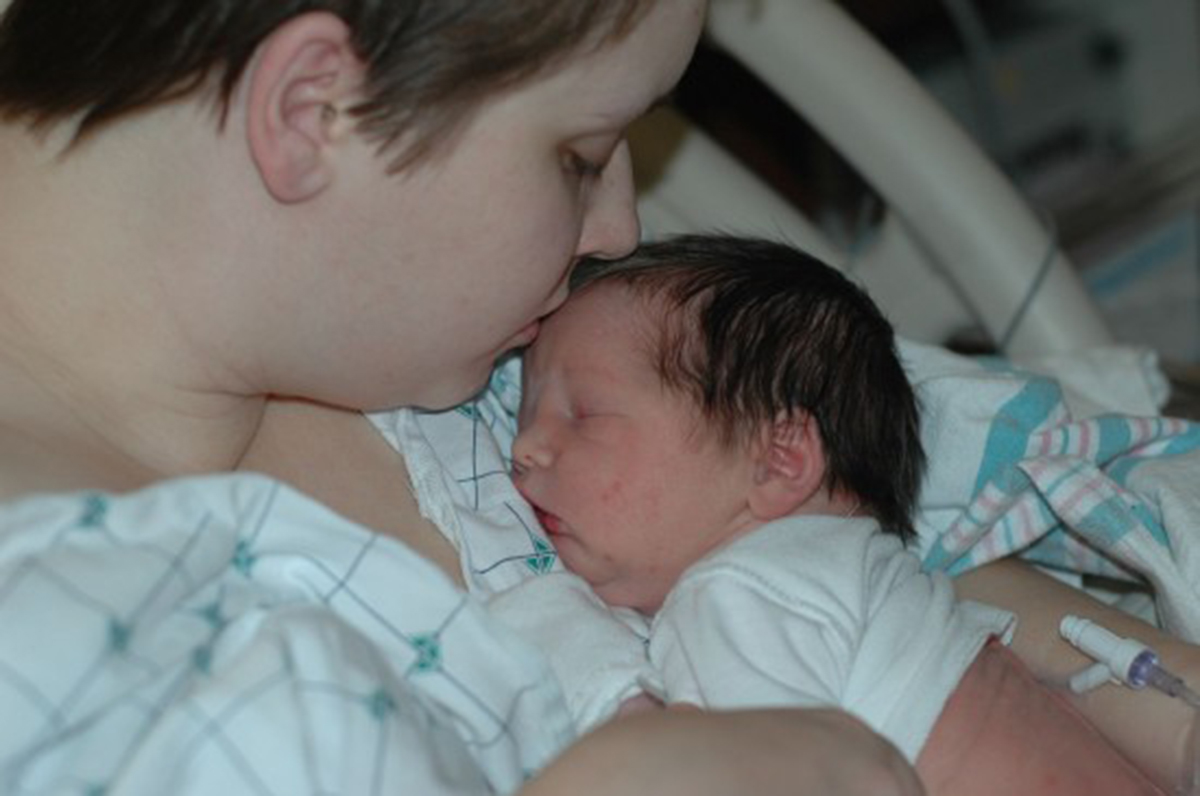Table of Contents
Emergency c-sections are cesareans that were not planned in advance. The mother will have gone into labor naturally, after which something caused the need for a c-section. Despite the alarming word "emergency", not all emergency c-sections happen in life and death situations where seconds matter.

Failure To Progress
Failure to progress, or a stalled labor, is the number one reason for emergency c-sections in the United States. Research shows that 10 percent of first-time moms in the US had a c-section for this reason. That seems like a lot, but what does failure to progress actually mean?
Failure to progress can be defined as a delayed delivery despite effective contractions.
It may be diagnosed at different points in the labor, depending on various factors such as:
- Is the mother having a first or subsequent baby?
- Does the mother have epidural anesthesia?
- Was the labor augmented with Pitocin?
- Did her bag of waters rupture?
The medical team will weight all these factors to come to a decision on whether to advise a c-section. Natural birth proponents describe the "failure to progress" diagnosis as a mere "failure to wait" — or in other words a tendency to be too intervention-happy. While this is certainly the case for some births, failure to progress can indicate an underlying but still undiagnosed problem with the baby, uterus, or the mother's physiology.
Fetal Distress
Fetal distress is diagnosed when there are signs and symptoms that the baby is not doing well. Those include heart rate irregularities, or an increased or decreased heart rate, lack of fetal movement, and the presence of meconium in the amniotic fluid.
If your baby shows any of these signs, your healthcare team will be quick to suggest a cesarean section. Continuing natural labor could worsen the baby's condition, while carrying out a c-section immediately means the baby can received adequate assessment and care very soon.
Other Reasons For An Emergency C-Section
There are numerous rarer complications that result in the need for a cesarean during labor. Cord prolapse is a complication in which the umbilical cord is expelled from the vagina before the baby.
The baby's weight presses on the cord, depriving it of oxygen. This is a catastrophic event that requires immediate action.
Read More: Vaginal Birth After C-Section - When Is It Safe?
Placental abruption is a situation in which the placenta starts to detach from the uterine wall before the baby is born. This, too, is a very dangerous and potentially fatal situation that calls for an emergency c-section.
A uterine rupture is a situation in which the uterus ruptures, either with or without immediate symptoms. This is a known complication in vaginal births after c-sections, but they can happen to women who have never had a cesarean section as well. A uterine rupture leads to internal hemorrhage and places both mother and baby at immediate risk.
- Photo courtesy of benjgibbs by Flickr : www.flickr.com/photos/bengibbs/8535418646/
- Photo courtesy of Stephani by Flickr : www.flickr.com/photos/dalismustaches/1298242859/
- abcnews.go.com/Health/section-rates-vary-widely-hospitals-study-finds/story?id=18656847
- www.ncbi.nlm.nih.gov/pubmed/23743454www.nlm.nih.gov/medlineplus/ency/patientinstructions/000623.htm
- www.reuters.com/article/2011/10/28/us-twins-csection-idUSTRE79R6AP20111028
- www.usatoday.com/story/news/nation/2013/10/02/twin-birth-study/2909759/
- http://www.steadyhealth.com/articles/Vaginal_Birth_After_C_Section___When_Is_It_Safe__a2412.html


Your thoughts on this